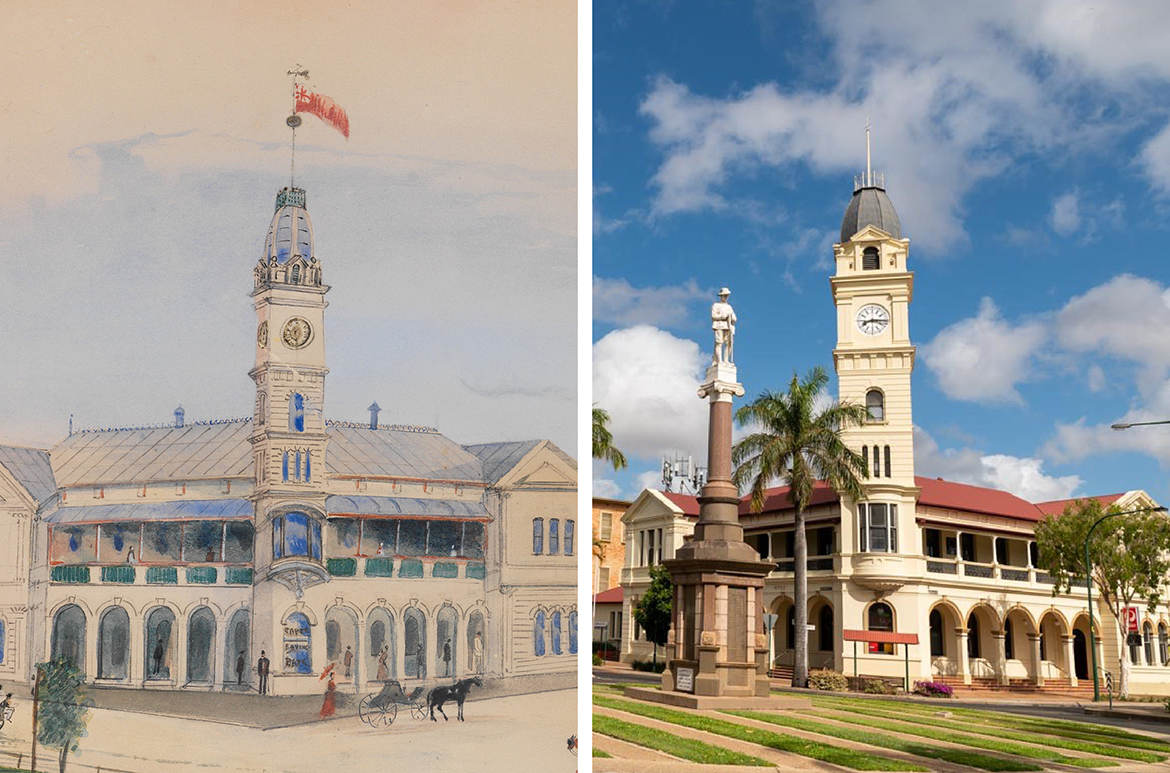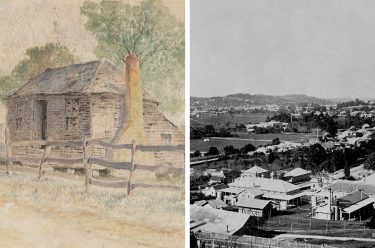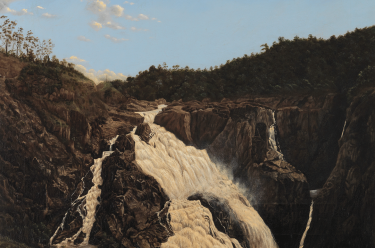Although the artist of A view of the new Post Office & School of Arts, Bourbong St. Bundaberg from Barolin St., Augt. 1st 1891, Queensland 1891 (illustrated) is unknown — like the artists of many images of nineteenth century Queensland — the watercolour quite possibly by an architectural draftsman, is significant in showcasing the growing civic pride and wealth of a newly established town.
Bundaberg, midway between Maryborough and Gladstone, is a prosperous sugar-farming and horticultural region established in the 1870s, producing sugar commercially from 1872. Bundaberg owes its survival to the growth of the sugar industry, by the early 1880s with a population of some 1,000, the town was already a major Australian producer, operating two dozen crushing mills, and renowned for its rum distillery since 1888, using molasses, a by-product of sugar. Today Bundaberg is the tenth largest city in the state with a population of over 70,000, some 280 kilometres or a 4 hour drive north from the capital, Brisbane.
‘A view of the new Post Office & School of Arts’ 1891
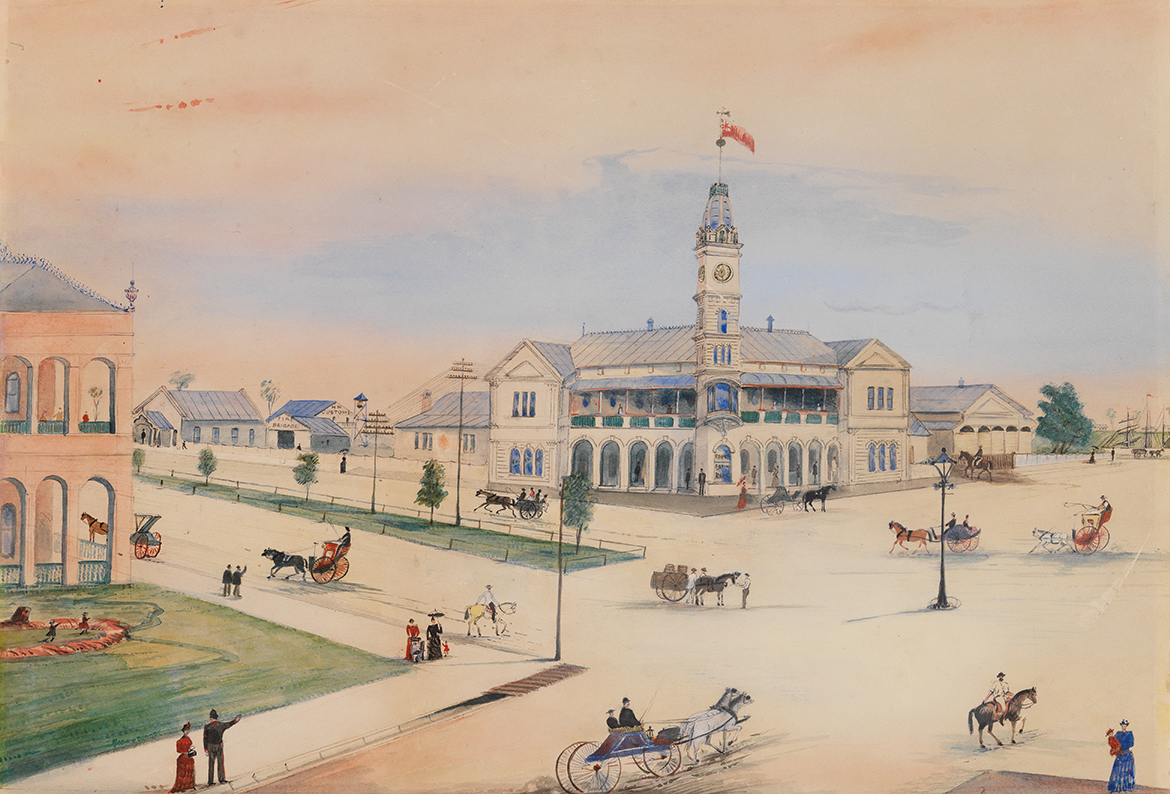
Bundaberg Post Office 2023
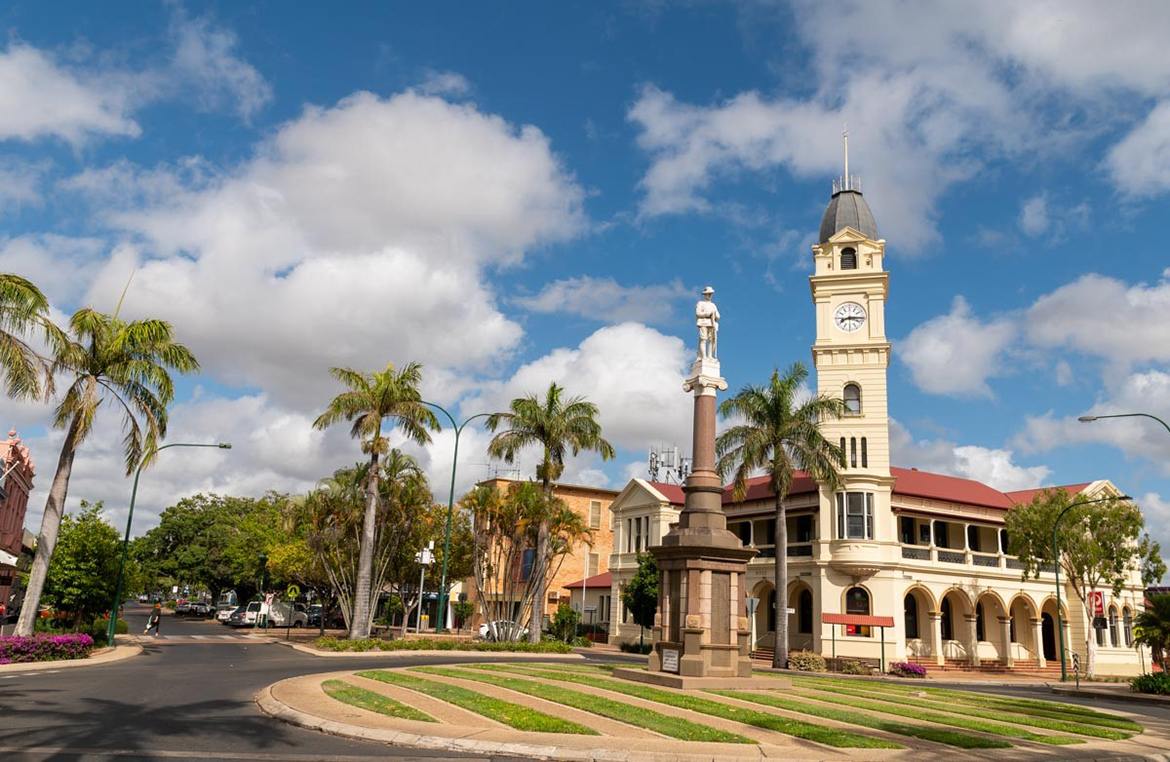
The watercolour is an expression of the material prosperity and cultural success of the regional town as it records the completion of two major buildings. The work focuses on the Bundaberg Post Office (illustrated) — which has remained unchanged since its construction — designed by Brisbane architect Charles McLay (c.1860-1918), at that time the major designer in the Colonial Architect’s Office. The impressive two-story building opened in 1890 and the 30 metre high clock tower which dominates the town was completed in 1891 — the clock which had been ordered from England was installed in 1892. The only noticeable change to the building’s foreground streetscape today is the addition of the Bundaberg War Memorial unveiled in 1921.
To the left is the Bundaberg School of Arts (illustrated) — the oldest public building still standing today — which was completed in 1889 to the design of the partnership Hettrich and Champ (1888- 91).
Bundaberg Post Office 1895
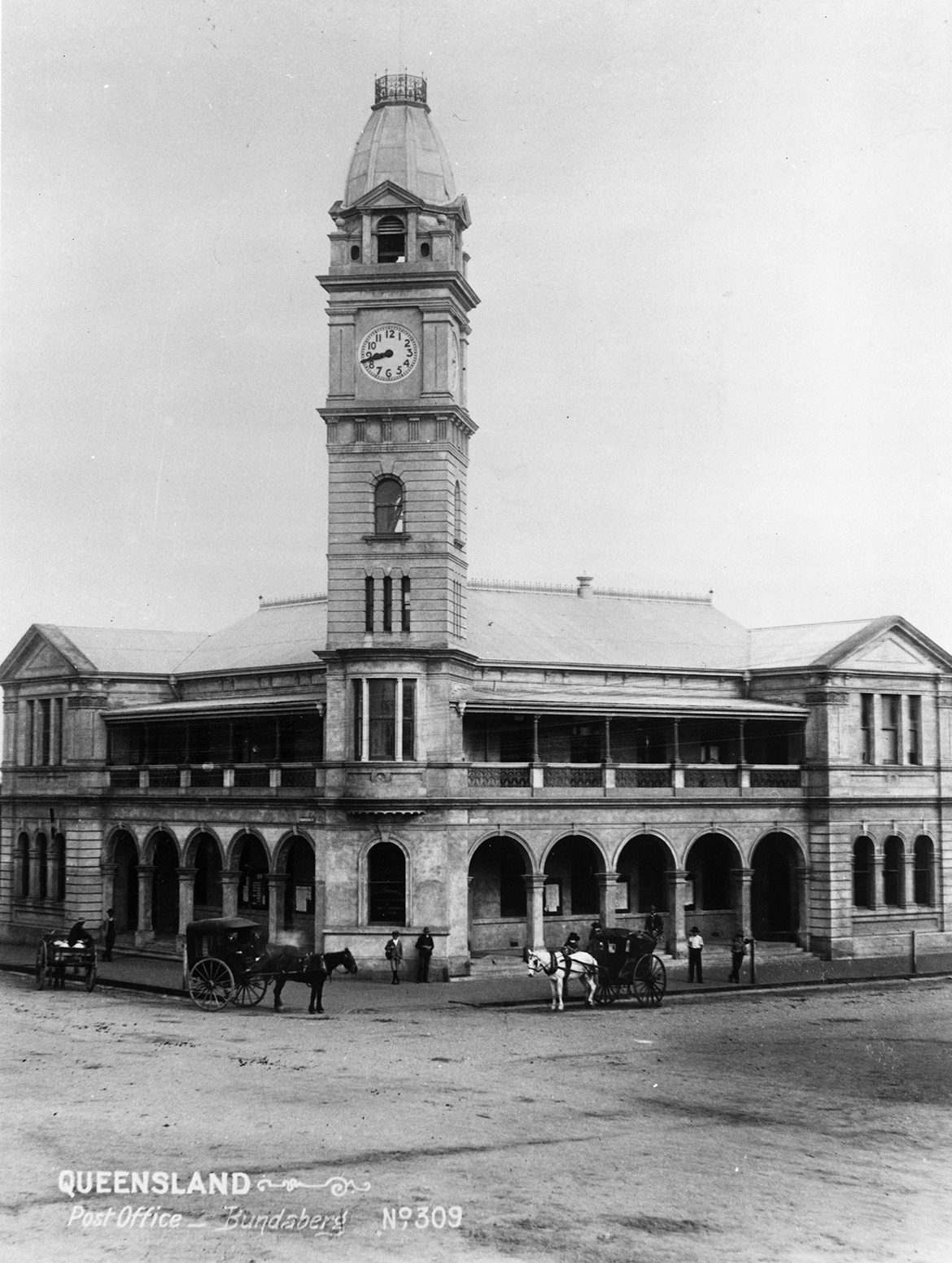
Bundaberg School of Arts 1900
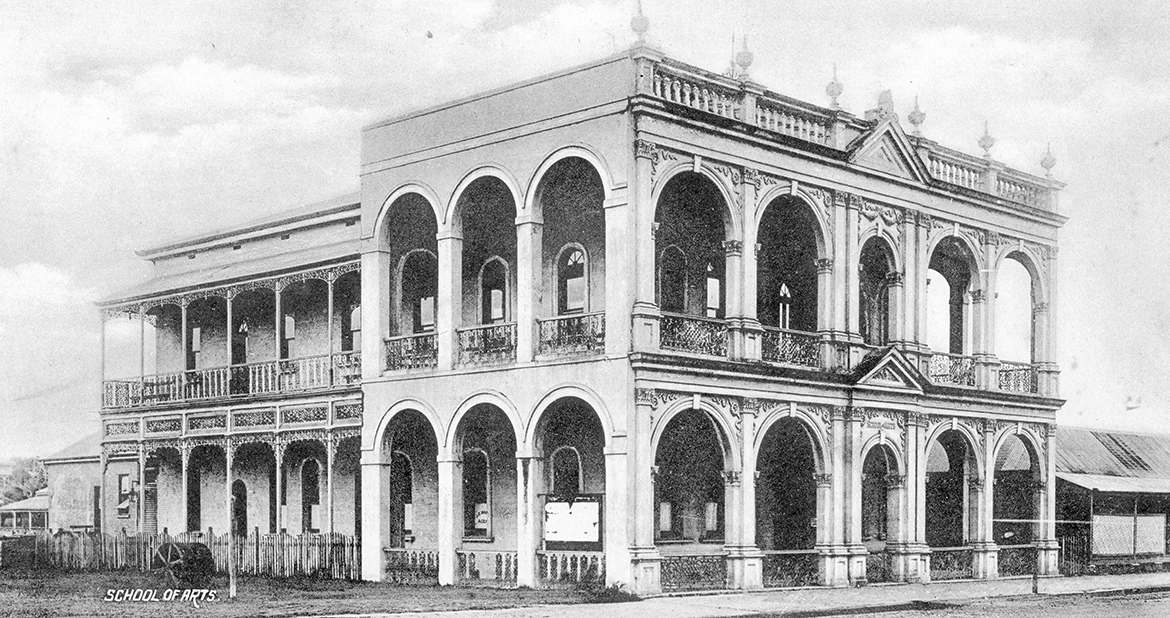
Bourbong Street, looking toward the Post Office 1900
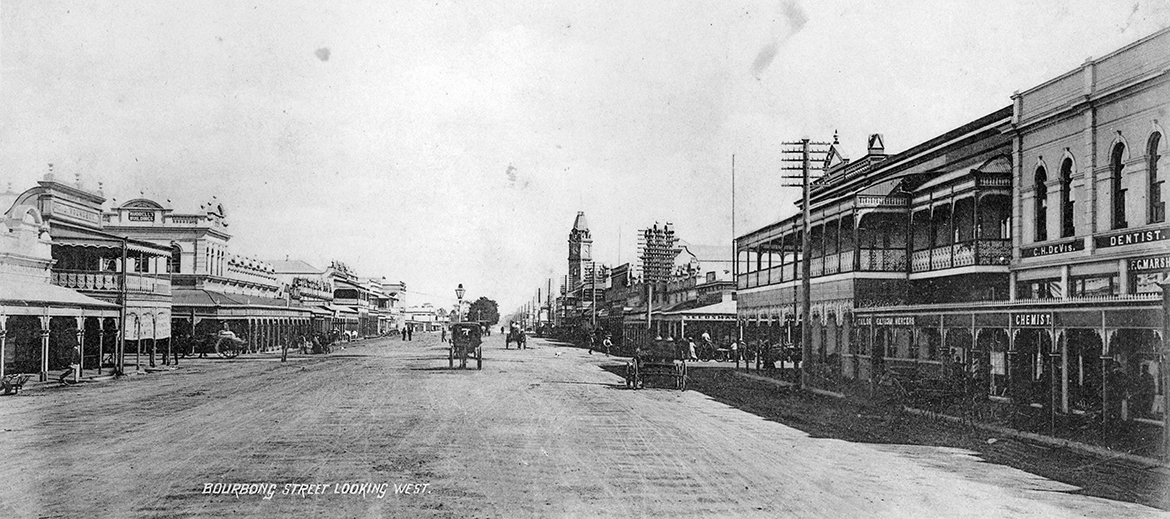
View from the Post Office toward Bundaberg Distillery 1905
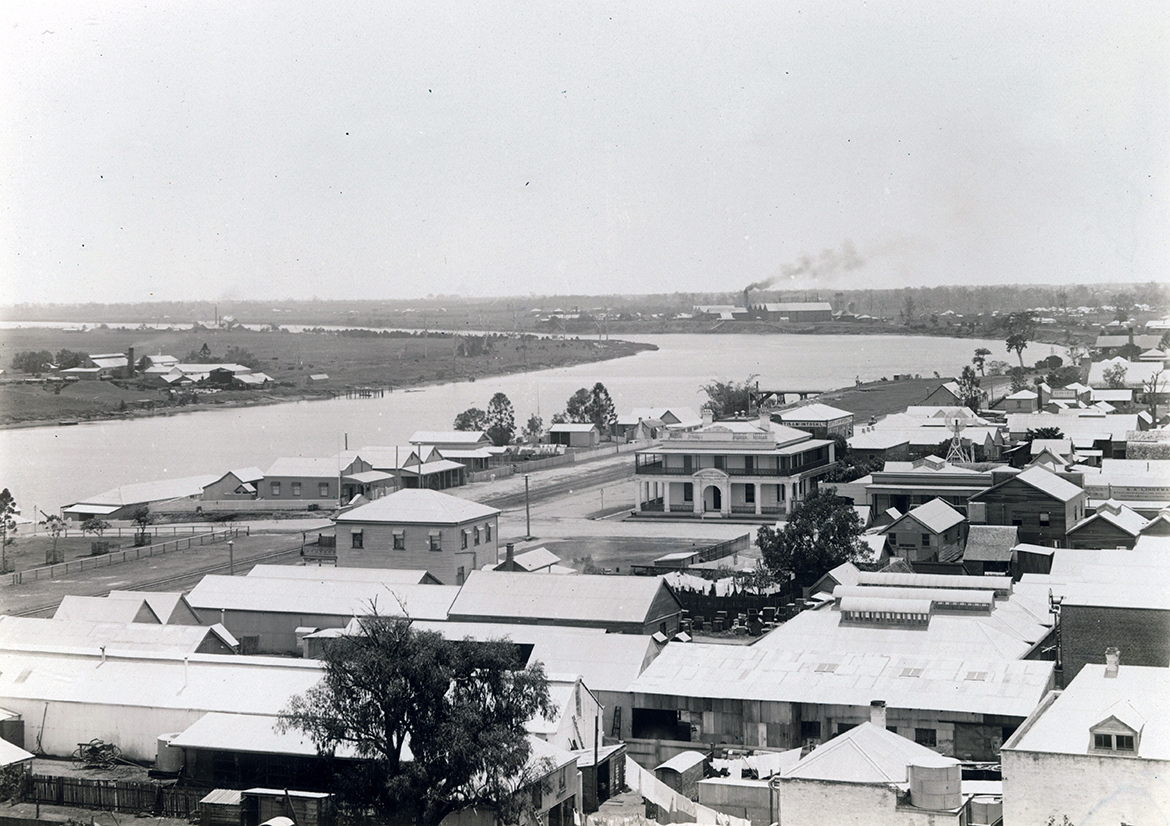
Curatorial extracts, research and supplementary material compiled by Elliott Murray, Senior Digital Marketing Officer, QAGOMA
#QAGOMA
